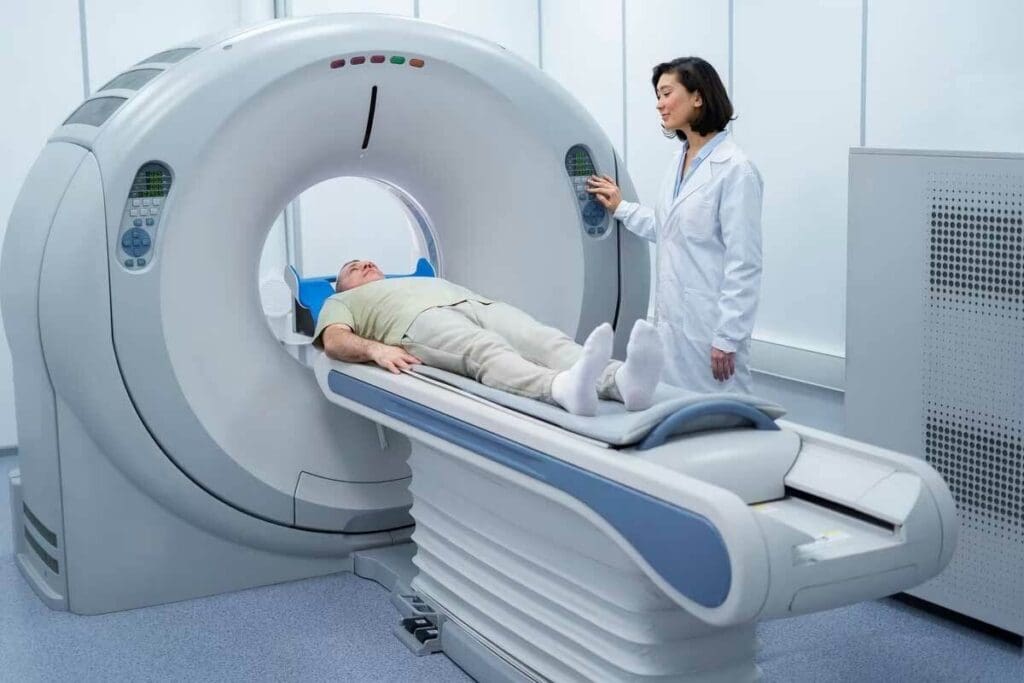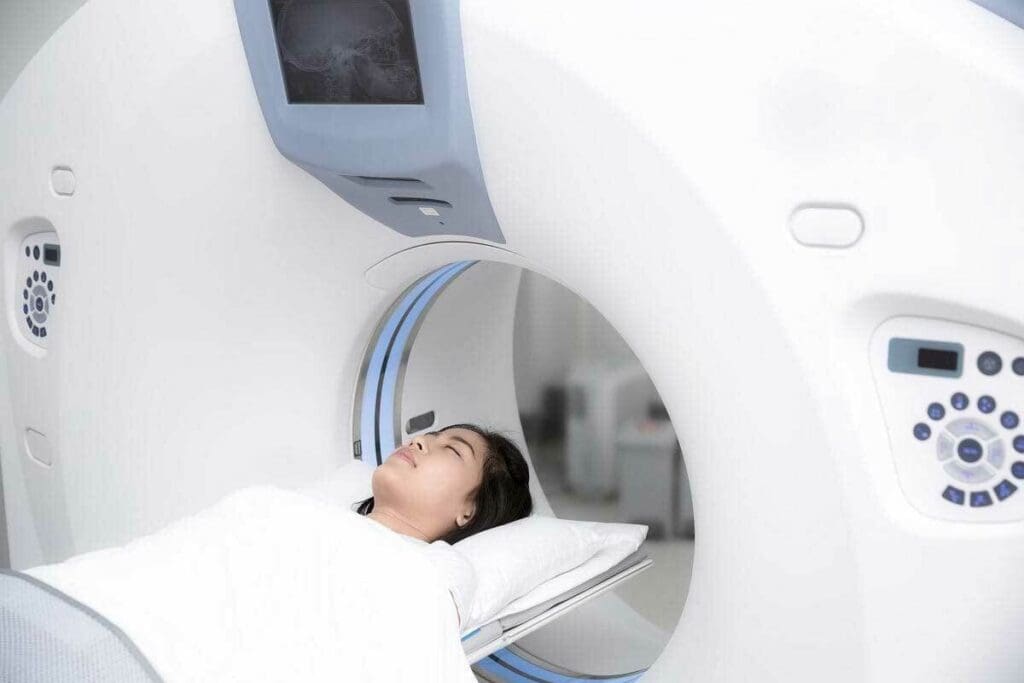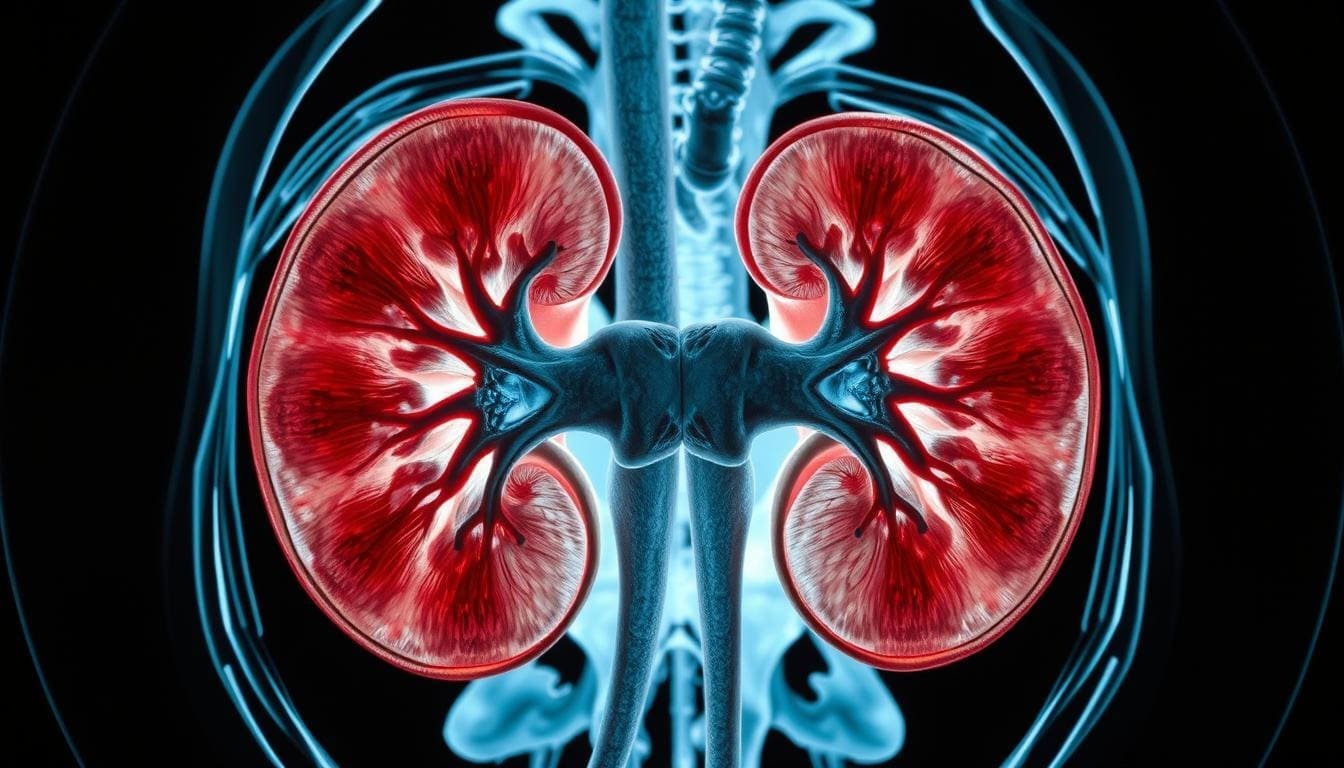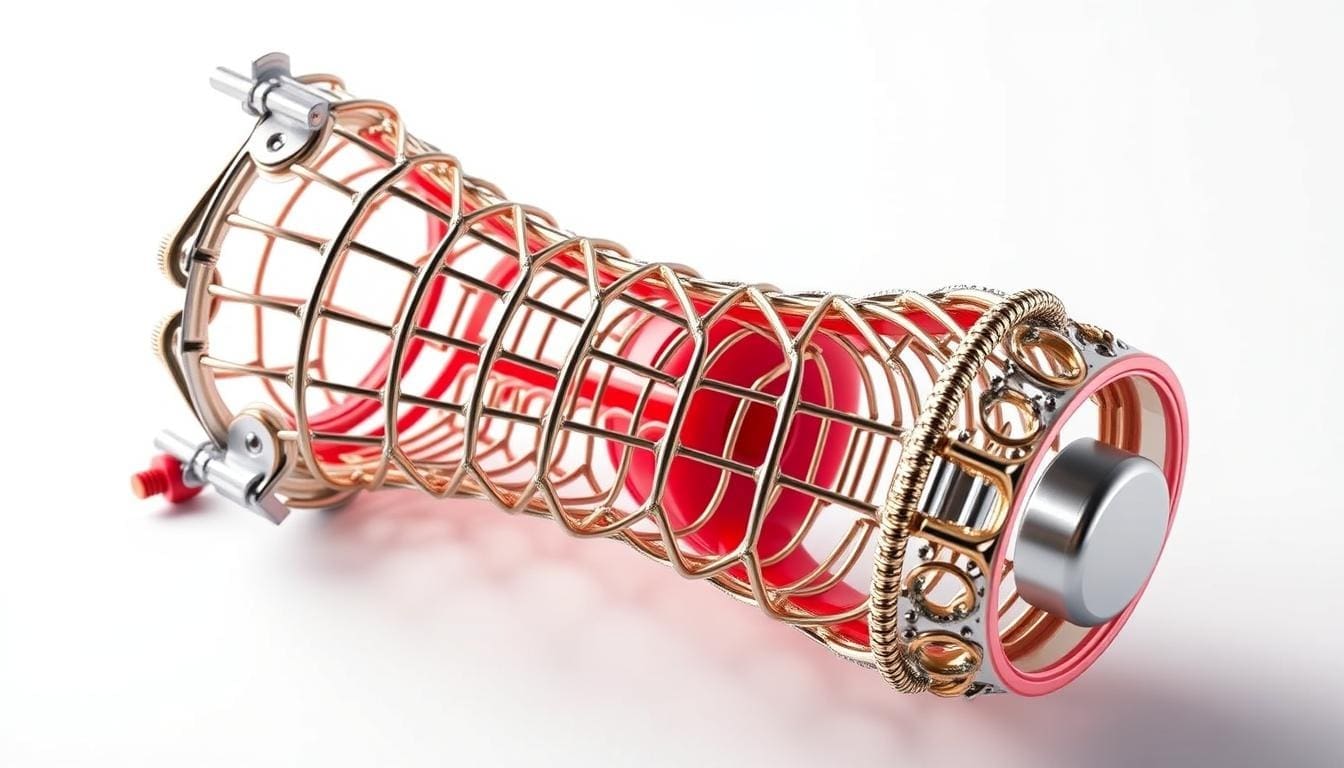Last Updated on November 27, 2025 by Bilal Hasdemir

Find out how often can you get CT scans. Our best and ultimate guide provides powerful answers on safe frequency and the time between procedures. Computed Tomography (CT) scans are key in modern medicine. Over 90 million CT scans were performed in the U.S. last year. This number has grown a lot in recent years.
The number of CT scans you can get depends on your health needs. At Liv Hospital, we focus on your care and follow the latest safety guidelines. This ensures your safety with repeat CT scans.
It’s important to know when you can get a CT scan. We’ll look at the safety concerns and why it’s key to weigh the benefits and risks.
Key Takeaways
- CT scan frequency depends on individual health needs and circumstances.
- There is no one-size-fits-all limit on how often you can get a CT scan.
- CT scans are a valuable diagnostic tool, with over 90 million performed annually in the U.S.
- Liv Hospital prioritizes patient safety and adheres to the latest protocols for CT imaging.
- Balancing diagnostic benefits and potentially risks is vital for CT scan safety.
Understanding CT Scans: Purpose and Technology

CT scans are key in medical imaging. They show detailed pictures of the body’s inside parts. This makes them very important in healthcare today.
What is a CT Scan and How Does it Work?
A CT scan is a non-invasive way to see inside the body. It uses X-rays from different angles to make detailed images. Doctors use these images to help diagnose and treat many health issues.
To get a CT scan, you lie on a table that moves into a big machine. The machine takes X-rays as it moves around you. A computer then makes detailed pictures from these X-rays.
Common Medical Reasons for CT Scans
CT scans are used for many reasons:
- Detecting injuries or internal bleeding
- Diagnosing cancers or monitoring their treatment
- Guiding interventional procedures like biopsies
- Examining the brain, spine, or other parts of the body for various conditions
They are very helpful in emergencies when quick diagnosis is needed.
Different Types of CT Scans
There are many types of CT scans for different needs:
| Type of CT Scan | Description | Common Use |
| Standard CT Scan | Provides detailed images of organs, bones, and tissues | General diagnostic purposes |
| CT Angiography | Visualizes blood vessels and detects vascular diseases | Diagnosing vascular conditions |
| High-Resolution CT Scan | Offers detailed images of small structures like lung tissue | Examining lung diseases |
Knowing about the different CT scans and their uses is important. It helps us understand their role in healthcare. It’s also key to know about CT scan safety. This includes knowing about the use of contrast agents and the CT scan limit. It’s important to make sure the benefits of the scan are worth the risks.
How Often Can You Get CT Scans: The Basic Guidelines

Getting CT scans isn’t the same for everyone. It depends on your health needs. Several things matter, like your medical condition, treatment stage, and what doctors think.
Is There a Fixed Limit on CT Scan Frequency?
There’s no one rule for how often you can get a CT scan. It’s all about your personal health situation. Doctors look at your medical needs, not just a number.
Clinical judgment is key in deciding on CT scans. Doctors balance the scan’s benefits against risks like radiation. The Radiological Society of North America says the scan’s risk is weighed against its medical need.
Clinical Need as the Primary Determining Factor
The need for a CT scan is the main reason for getting one. For serious injuries or complex conditions, you might need more scans. But for simple check-ups, you might not need as many.
“The decision to perform a CT scan is based on a careful assessment of the benefits and risks, considering the patient’s health and current condition.”
Individual Health Considerations for Scan Frequency
Your health also affects how often you can get a CT scan. Things like your age, overall health, and past radiation exposure matter. For example, kids are more sensitive to radiation, so doctors use extra caution when scanning them.
In short, while there are guidelines for CT scans, the decision is very personal. It’s based on your medical needs and health situation.
Radiation Exposure from CT Scans: Understanding the Risks
It’s important for patients and doctors to know about the risks of CT scans. These scans are useful for diagnosing but expose us to radiation. This has led to worries about health risks.
Understanding Radiation Doses in CT Scans
The radiation from CT scans is measured in millisieverts (mSv). The dose changes based on the scan type, body part, and technology used. For example, a chest CT scan might have a dose of about 7 mSv, while a head scan might be around 2 mSv.
On average, we get 3 mSv of background radiation each year. But, getting many CT scans can increase this dose a lot. This could raise the risk of cancer, more so in kids and young adults.
Comparing CT Scan Radiation to Other Sources
It’s good to compare CT scan doses to other radiation sources. For instance, a CT scan of the abdomen and pelvis is like 3 years of natural background radiation. Flying from New York to Los Angeles, on the other hand, exposes you to about 0.1 mSv of cosmic radiation.
Knowing these comparisons helps patients and doctors decide when to use CT scans. They can weigh the benefits against the risks.
How Radiation Exposure is Measured (mSv)
Radiation exposure is measured in sieverts (Sv), with millisieverts (mSv) used more for medical purposes. The effective dose in mSv considers how different parts of the body react to radiation. This helps estimate the overall risk from a CT scan.
Doctors can use this knowledge to adjust CT scan settings. They aim to lower the dose while keeping the images clear for accurate diagnoses.
How Many CT Scans Per Year is Safe?
It’s important to know how many CT scans are safe each year. This balance is key to getting the most from scans while keeping risks low. How often someone can safely get a CT scan depends on their health, age, and why they need the scan.
Risk Assessment for Multiple Scans
Looking at the risks of getting many CT scans means thinking about the total radiation. While one scan is usually safe, many can raise the chance of harm, like cancer.
Cumulative Radiation Exposure: The more radiation you get, the higher the risk of cancer. So, it’s vital to keep track of the total dose over your life.
The 100 mSv Threshold and Cancer Risk
Studies show that doses over 100 mSv a year might raise cancer risk a lot. This number is often used to check if CT scans are safe.
100 mSv Threshold: Getting this much radiation or more might increase cancer risk. But, the exact risk depends on many things like age and gender.
CT Scan Limits: Balancing Diagnostic Benefits and Risks
It’s important to weigh the good of CT scans against the risks. For most adults, the benefits usually win out when scans are used right. But, each scan must have a good reason to be done.
| Radiation Dose (mSv) | Equivalent to | Cancer Risk Estimate |
| 10 | About 4 years of natural background radiation | 1 in 1,000 |
| 100 | About 40 years of natural background radiation | 1 in 100 |
| 500 | Significant exposure, potentially harmful | 1 in 20 |
Knowing these risks and benefits helps doctors decide how often to use CT scans. This way, they can get the most from scans while keeping radiation low.
Can You Have 2 CT Scans in a Month? Multiple Scans in Short Periods
In some medical cases, getting two CT scans in a month might be okay. The choice to have more CT scans quickly depends on several things. These include the patient’s health, the need for more images, and the risks of radiation.
Medical Justification for Frequent Scans
Getting more CT scans quickly needs a good reason. Clinicians look at the benefits and risks. They think about how serious the patient’s condition is, if they need to keep watching, and if there are other ways to see what’s going on.
For example, in serious injuries or complex health issues, more CT scans might be needed. This is to help doctors make decisions or track how the disease is changing. In these cases, the benefits of more scans usually outweigh the risks of radiation.
Monitoring Protocols for Patients Requiring Multiple Scans
When patients need more CT scans, doctors have special plans to keep them safe. These plans include:
- Keeping track of how much radiation the patient has had
- Changing scan settings to use less radiation but get good images
- Choosing other imaging options when they’re available
- Checking the patient’s health regularly to see if more scans are needed
By following these steps, doctors can make sure patients get the imaging they need safely.
Emergency Situations and Repeat Imaging
In emergencies, quick diagnosis is more important than radiation worries. Trauma patients, for example, might need many CT scans to check their injuries. In these urgent situations, getting a fast and accurate diagnosis is more important than the long-term risks of radiation.
Doctors have to weigh the need for quick diagnosis against the risks of radiation. They must think carefully about the patient’s situation and the best imaging plan.
Minimum Gap Between Two CT Scans: Expert Recommendations
The time between two CT scans is very important for both patients and doctors. There’s no single answer for how long to wait between scans. Many things can affect this decision.
Is There a Required Waiting Period Between Scans?
No, there’s no set time for waiting between CT scans. Doctors decide on scans based on what’s needed for each patient. They look at the patient’s health history and current state.
“The decision to perform a CT scan should be based on a careful assessment of the possible benefits and risks for the individual patient.”
Factors Affecting the Timing Between Scans
Several things can change how often CT scans are needed, including:
- The type of scan and its purpose
- The patient’s medical condition and history
- The use of contrast agents
- The patient’s age and overall health
For example, people with long-term health issues might need scans more often. This helps keep track of their health.
| Factor | Influence on Timing |
| Type of Scan | Diagnostic scans may be repeated after a certain period to monitor condition progression or treatment efficacy. |
| Medical Condition | Chronic conditions may require more frequent scans. |
| Contrast Agents | The use of contrast can affect the timing due to possible side effects and the need for kidney function assessment. |
Time Interval Between CT Scans With Contrast
For CT scans with contrast, the gap between scans can be influenced by the contrast type and the patient’s kidney health.
Key Considerations:
- The type of contrast agent used
- The patient’s kidney function
- Any previous reactions to contrast agents
Doctors look at these factors to decide the best time for CT scans with contrast. This ensures safety and gets the needed information for diagnosis.
Cat Scan Safety: Protocols and Risk Reduction Strategies
Keeping CT scans safe is a big deal. It’s done through strict rules and new tech. Many patients worry about the risks of radiation. But, doctors and hospitals follow strict rules to make sure CT scans are safe.
How Medical Facilities Ensure CT Scan Safety
Medical places take many steps to keep CT scans safe. They follow rules based on science to decide when to use CT scans. They also use the latest CT scanners to use less radiation but keep images clear.
They also have rules for radiation safety. This includes using shields to protect parts of the body. Technologists are trained to use the scanners right and place patients to lower exposure.
Evidence-Based Guidelines for Minimizing Exposure
Guidelines based on science are key to lower radiation in CT scans. These guidelines come from the latest studies. For example, the American College of Radiology (ACR) sets standards for CT scans.
Following these guidelines helps doctors use the least amount of radiation. This makes CT scans safer for patients.
Technology Advancements Reducing Radiation Doses
New tech has helped lower radiation in CT scans. Modern scanners have features like dose modulation. This adjusts the dose based on the patient and the area scanned.
Also, new ways to make images have come up. These let doctors make clear images with less radiation. This shows a big push for patient safety in CT scans.
In short, CT scans are safe thanks to strict rules, science-based guidelines, and new tech. Knowing about these steps helps patients feel safe during CT scans.
How Safe is CT Scan With Contrast? Special Considerations
When you think about getting a CT scan with contrast, knowing about the safety of the contrast agents is key. We’ll look at the different types of contrast agents, their safety, and any side effects they might cause.
Types of Contrast Agents and Their Safety Profiles
CT scans use iodine-based or barium-based compounds as contrast agents. Iodine-based agents are the most common because they work well for seeing blood vessels and organs. Iodine-based agents are generally safe when used right, but some people might have bad reactions.
Barium-based agents are used for the gut. Barium isn’t absorbed by the body and is usually safe. But, it can cause constipation or, very rarely, an allergic reaction.
Potential Side Effects and Complications
Contrast agents can cause side effects, from mild to serious. Common issues include nausea, vomiting, and a metallic taste. Rare but serious reactions like anaphylaxis can happen too.
Doctors check for risks before giving contrast agents. They look for allergies, kidney problems, and past reactions to contrast media.
| Side Effect | Frequency | Severity |
| Nausea | Common | Mild |
| Vomiting | Less Common | Moderate |
| Anaphylaxis | Rare | Severe |
Screening Protocols for Contrast Medium Safety
Medical places have strict rules for using contrast media. They check the patient’s health history, like kidney function and allergies. They also weigh the benefits against the risks of using contrast agents.
Patients learn about the risks and benefits of contrast agents. This helps them make smart choices about their treatment.
By knowing about contrast agents’ safety and following strict rules, we can lower the risks of CT scans with contrast. This way, patients get the help they need without harm.
Special Populations and CT Scan Frequency Considerations
Children, adolescents, pregnant women, and elderly patients have special needs for CT scans. We must think about their unique health situations and risks. This helps us decide if a CT scan is right for them.
CT Scan Considerations for Children and Adolescents
Children and teens are more vulnerable to radiation because their bodies are growing. They have a longer life ahead, which means more time for radiation harm. So, we must be extra careful with CT scans for them.
- Minimizing radiation dose: We use special protocols to lower radiation while keeping images clear.
- Justification: CT scans are only done if the benefits are greater than the risks.
- Alternative imaging: We look for other imaging options, like ultrasound or MRI, when we can.
Pregnancy and CT Scan Safety
Pregnancy makes choosing a CT scan tricky because of radiation risks to the fetus. We must carefully consider the benefits against the risks.
Key considerations include:
- The stage of pregnancy and how sensitive the fetus is to radiation.
- How urgent the CT scan is and if it can wait.
- Looking into imaging options that don’t use ionizing radiation.
If a CT scan is needed during pregnancy, we take steps to protect the fetus. This includes using lead shielding and adjusting the scan settings.
Elderly Patients and Multiple Scan Considerations
Elderly patients often need multiple CT scans for ongoing health monitoring. We look at their overall health, the total radiation dose, and the benefits of each scan.
Factors influencing CT scan frequency in elderly patients include:
- The impact of health conditions on the need for scans.
- The patient’s life expectancy and chance of benefiting from scans.
- Options for other diagnostic methods.
By carefully looking at these factors, we can make smart choices about CT scans. This balances the need for diagnosis with patient safety.
Conclusion: Making Informed Decisions About CT Scan Frequency
Deciding how often to get CT scans is a complex issue. It involves weighing the benefits against the risks. We’ve looked at many factors, like the need for scans, health conditions, and radiation risks.
To make smart choices about CT scans, we need to know a lot. We must think about why each scan is needed, how to keep radiation low, and what each patient needs. This helps us use CT scans wisely and safely.
By carefully considering the good and bad sides of CT scans, we can help patients get the best care. This careful approach helps doctors make the right choices about when to use CT scans. It leads to better health outcomes for everyone.
As medical technology gets better and we learn more about safety, we must keep making smart choices about CT scans. We need to focus on both getting accurate diagnoses and keeping patients safe.
FAQ
How many CT scans per year is considered safe?
The number of safe CT scans per year varies. It depends on your health and why you need the scans. We look at each case carefully.
Is there a fixed limit on how often I can get a CT scan?
No, there’s no set limit on how often you can get a CT scan. It depends on your health and if you really need it.
Can I have 2 CT scans in a month?
Yes, you can have 2 CT scans in a month if it’s medically necessary. This might be in emergencies or for serious conditions. We follow strict rules to keep risks low.
What is the minimum gap between two CT scans?
The gap between two CT scans varies. It depends on the scan type, contrast use, and your health. We decide on a case-by-case basis.
How safe is a CT scan with contrast?
CT scans with contrast are usually safe. We use modern contrast agents and follow strict rules. We check for side effects and complications.
Are CT scans safe for children and adolescents?
CT scans can be safe for kids and teens if really needed. We use special protocols to lower radiation. We take extra care with younger patients.
Can pregnant women have CT scans?
Pregnant women might have CT scans in some cases. We weigh the benefits and risks. We try to use other imaging methods first.
How do medical facilities ensure CT scan safety?
Medical facilities follow guidelines and use new tech to reduce radiation. We also have strict safety rules.
What are the risks associated with radiation exposure from CT scans?
Radiation from CT scans might increase cancer risk, mainly with high doses. We aim to keep doses low while getting good images.
How is radiation exposure from CT scans measured?
We measure radiation in millisieverts (mSv). This helps us compare doses and understand risks.
What is the 100 mSv threshold and its relation to cancer risk?
The 100 mSv threshold is when cancer risk might go up. We try to keep doses below this while getting good images.
How often can elderly patients have CT scans?
Elderly patients can have CT scans as needed. We consider their health, medical history, and the scan’s benefits and risks.
Are there different types of CT scans, and do they affect safety?
Yes, there are different CT scans, and safety can vary. It depends on the technology and protocol used.
Reference
- Deak, P. (2023). Assessment and comparison of radiation dose and cancer risks from thoracic diagnostic CT. ScienceDirect. Retrieved from https://www.sciencedirect.com/science/article/pii/S1687850723001954






